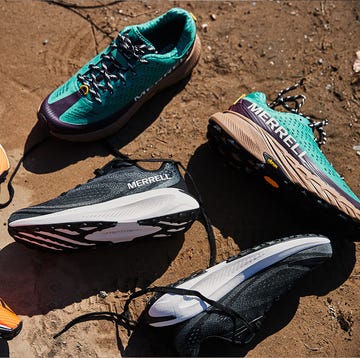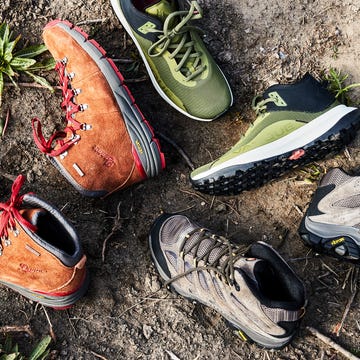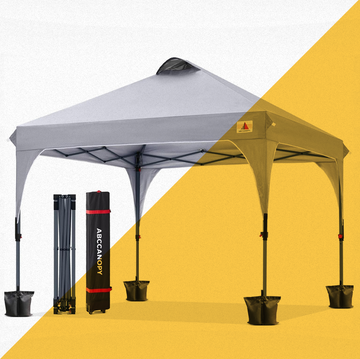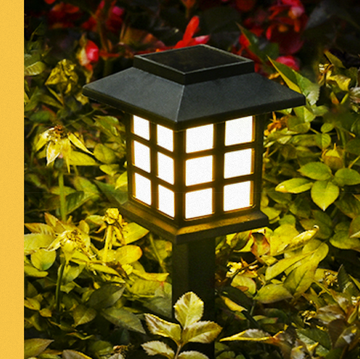After moving to upstate New York a few years ago, hiking has become a major part of my life. While I love this activity, there’s one thing that’s a constant nuisance: breaking in new hiking boots. Compared to sneakers, hiking boots provide strong ankle support to prevent them from rolling on uneven surfaces, as well as a rigid midsole for stability. As a result, this type of footwear is more stiff and difficult to get comfortable in—if you aren’t doing it properly.
Using the right techniques, you can mold your boots to your feet to prevent painful blisters, sore feet, and a frustrating first hike. To ensure the perfect comfort and support for miles of adventure, I spoke to a few shoe experts, and a board-certified podiatrist for the best tips and proper steps for breaking in new hiking boots.
Why Breaking in Boots Matters
Unlike casual shoes, hiking boots provide more durability and support, meaning they often have a stiffer construction than you might be accustomed to. "Not all boots need breaking in, especially lighter ones, but most will be more comfortable after a little wear," says Krissi P, a Backcountry Gearhead. As you wear your boots, they'll mold to your feet, providing a more customized fit, which ultimately makes them more supportive.
Even if you do have a pair of lightweight hiking boots (these are best for shorter day hikes rather than long-haul treks), a brief break-in period can ensure your boots fit correctly. Moreover, you won't feel uncomfortable when you hit the trail.
Is It Normal for Hiking Boots to Hurt at First?
I know I said earlier that breaking in hiking boots can be a pain, but I didn’t mean that literally. Let me emphasize: Hiking boots should never hurt, not even ones fresh out of the box. Hiking boots might feel a little stiff (that's why you need to break them in), but pain is a bad sign. "You shouldn’t feel pinching on pressure points or slippage in the heel," says Sarah Stornant, Merrell senior product line manager. "They should feel like they are providing support in all the right areas, both under and over the foot.”
If your hiking boots hurt at any point, even after breaking them in, don't wear them. If this is the case, it’s likely they don’t fit properly, and you need a different size or model.
Fit Above All
The first step to making your break-in period as easy as possible is finding a pair of hiking boots that have a comfortable fit the very first time you try them on. "I like to have just a little space in the toe box, but not enough for a full size up,” explains Krissi P. “The heel and ankle should feel snug to prevent any slipping."
Overall, a boot that is too loose can lead to blisters, as your foot has too much room to rub against the boot, and it won’t provide the support you need for hiking. Conversely, a boot that’s too snug can create soreness and pain on pressure points.
It’s also important to remember the fit around your ankle. "If you have a history of ankle injury or instability, ankle support will be critical for your hiking boots," says Dr. Sondema Tarr, a board-certified podiatrist. The shaft of the boot will add ankle support, but it's up to you just how rigid you'd like that support to be. Some hikers might prefer a more flexible fit, while others might need a slightly tighter shaft for additional support.
Choosing the Right Socks
Breaking in hiking boots also requires the right pair of socks for excellent comfort. Socks add a level of cushioning to your shoe, but just how much extra cushioning you'd like is a personal call. Keep in mind that hiking socks should fit snugly, but not too tight. If there's excess material, it can bunch up and lead to blisters. "Proper socks with synthetic or wool materials are also important to wick moisture and to avoid blisters," says Stornant.
Socks can change the fit of a hiking boot, so you should wear them when you're trying your boots on. Moreover, you should always wear your hiking socks throughout the break-in process. While this doesn’t mean that you’ll have to commit to the same style of socks forever, sticking to a general style and thickness helps keep your hiking boots’ comfort levels just right.
The Material Difference
Most hiking boots, like the Hoka Kaha 3, are made from synthetic materials. However, there are options made from leather, or in some cases, like the Blundstone 500 Chelsea Boot, both kinds of materials. Generally though, your hiking boots’ material factors into the break-in process.
"Leather boots take a bit more time to stretch and soften up more over time than boots made with synthetic materials," says Erin Cooper, Salomon senior marketing manager of performance and sportstyle. "It’s typical to use boot conditioners when breaking in full-grain leather hiking boots to speed up the process."
Boot conditioners keep leather smooth and soft, allowing it to retain a level of flexibility that’s perfect for breaking in hiking boots. However, this comes at the risk of potentially darkening your boots. Alternatively, synthetic boots are often less stiff to begin with, so they can break in more quickly with normal wear.
Take Baby Steps First
I highly recommend starting small before trekking 35 miles up a mountain in a new pair of hiking For example, I like to wear boots around my house for a few days first to get a sense of fit. Once I feel confident in how the boot feels, then I take them outside.
"It’s always a best practice to test your shoes out on the trails in smaller doses before a big hike," says Cooper. "This is a great way to get a sense for the product on the move and to flag any areas of discomfort."
How to Maintain Hiking Boots
Once you've put in all the hard work of breaking in your boots, you'll want to keep them in tip-top shape. After each hike, I like to wipe down my hiking boots with a damp cloth to get rid of any dirt or debris. "If your boots feature a waterproof membrane like Gore-Tex, washing will also help maintain the waterproofing and breathability," says Cooper.
After wiping your boots, Krissi P recommends storing them in a cool, dark place with good airflow to dry them out. "Even if you’re not hiking in wet conditions, your feet will get sweaty," Krissi P adds.
How Long Do Hiking Boots Last?
Frequent use on difficult trails will wear boots down faster than occasional use on easy trails. "On average, a well-maintained hiking boot lasts about 500 miles," says Krissi P. If you're not tracking your boots' mileage, don't worry. There are signs that your boots are nearing the end of their life.
"When a boot’s outsole wears out, midsole loses its bounce and support, or you begin to feel new aches and pains with normal use, it is likely time to retire it," says Cooper. While it’s hard to say good-bye to a pair of hiking boots that you’ve used for a while, breaking in a new pair of boots doesn’t need to be a whole lot of work if you make sure to choose the right size and material. You should also give yourself plenty of time to walk around in them before embarking on your next adventure.

Stefanie Waldek is a Brooklyn-based writer covering architecture, design, and travel. She's worked on staff at Architectural Digest, ARTnews, and Oyster.com, a TripAdvisor company, and has contributed to Condé Nast Traveler, The Washington Post, Design Milk, and Hunker, among others. When she's not dreaming about midcentury chairs, you can find her re-watching The X-Files, likely in an airport lounge or on a plane.


















